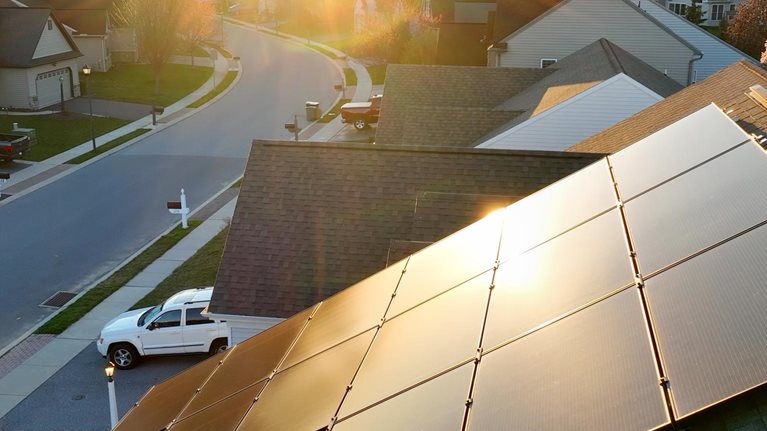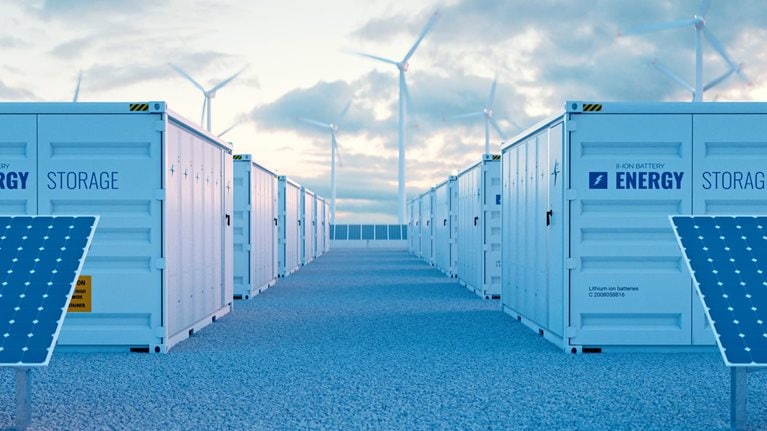Residential battery energy storage systems (BESS) primarily serve two purposes for homeowners. First, they capture energy generated by solar panels and store it for use when needed, such as in periods of inclement weather or when grid electricity rates increase. Second, they can act as backup generators, providing power during potential outages.
In recent years, the European residential BESS manufacturing industry experienced exponential demand growth, fueled partly by consumer desire for energy independence because of surging electricity prices.1 Since the second half of 2023, however, demand growth has temporarily leveled off. At the same time, Asian BESS manufacturers, mostly from China, have entered the European market, increasing supply and price competition.
Companies in the value chain—including system integrators, manufacturers of battery cells and solar panels, and utilities—will need to stay abreast of shifting supply and demand dynamics to stay competitive. As the industry expands, new opportunities are emerging in the commercial and industrial BESS market. This article provides an industry snapshot as well as four possible ways European OEMs could stay successful in the years to come.
Residential battery energy storage systems: An industry snapshot
After years of exponential growth, demand for BESS in Europe has temporarily flattened, with McKinsey research showing approximately 150 percent growth in the first half of 2023, which slowed to 10 percent in the second half of 2023 for Germany. However, our longer-term projections show an increase in BESS capacity additions until 2030, propelled by lower installation costs, rising electricity rates, and government incentives for consumers (Exhibit 1).

The current slowdown of demand can be attributed to the stabilization of energy prices (in Germany, for example, the wholesale price of electricity decreased from approximately €470 per megawatt-hour [MWh] in August 2022 to €95 per MWh in August 20232), an increase in supply, and a decrease in subsidies. Furthermore, rising interest rates and the general decline of the European economy mean consumers are more conservative when it comes to making investments in energy alternatives, such as solar photovoltaic (PV) and BESS, which can easily cost up to €30,000.
At the same time, the supply of residential BESS has increased because of the appearance of Asian players on the large and comparatively attractive European market; our research shows that European residential BESS installation represents 71 percent of global installations in 2024. These international players are placing cost pressure on European BESS OEMs by driving down prices. In early 2024, the price of residential BESS offered to end consumers in Europe ranged widely, from €400 to more than €1,200 per kilowatt-hour (kWh) (Exhibit 2).

How Europe’s residential BESS manufacturers can react
Historically, European OEMs built trust-based brands by highlighting their “made in Europe” status and rode the first-mover wave over the past ten years. As a result, many companies were able to place a relatively high price premium on residential BESS. Today, however, these same OEMs may need to strategize to hold their own in the newly competitive market by finding ways to decrease costs or justify price premiums to their customers.
The following actions can help European OEMs find success in the premium segment.
Leverage the importance of sales professionals
There are four main go-to-market routes for residential BESS manufacturers (Exhibit 3). The majority of residential batteries are purchased from sales professionals and professional installers, which means that both groups play significant roles in recommending or choosing BESS brands for homeowners. On this point, sales professionals actively sell and consult customers on BESS solutions and contract out installation to the installers. In a McKinsey survey of customers, the majority of residential BESS customers stated that sales professionals are their primary source of information for BESS systems, and 85 percent of customers believe it is important to have a local sales professional. Therefore, it’s important for OEMs to have a strong, reliable brand that meets expectations for sales professionals and professional installers. Our research shows that the features most critical to local installers include quality, hardware availability, ease of installation, potential to capture an attractive margin, local customer support, and warranties. European residential BESS OEMs can capture additional revenue by first ensuring that manufactured BESS products meet the criteria of sales professionals and installers and then by focusing on building trusting relationships.

Know your end customers’ expectations
A recent McKinsey survey shows that end customers highly value product price, high-level technical specification, and durability when comparing BESS products (Exhibit 4). Customers also associate products that are made in Europe with higher quality, more robust durability, and better service. To appeal to homeowners, a vertically integrated value chain that includes hardware sales and installation services can help maintain a high standard of customer service levels. A local brand can also appeal to customers who are sensitive to end-to-end sustainability along the entire value chain.

Integrate residential BESS with a strong home energy management system
A home energy management system (HEMS) can optimize home electricity generation and consumption by using smart meters to combine infrastructures such as BESS, solar PV, electric-vehicle charging, and heat pumps. Smart-meter offerings and renewables installations are increasing around the world, making it easier and more important for BESS to have a strong Internet of Things infrastructure so it can capture ecosystem offerings for an effective HEMS. A strong HEMS can also benefit both homeowners and operators of electricity distribution networks.
Developing a BESS to be compatible with its own line of products or third-party devices can represent a strong value proposition for homeowners because the device needs to be connected to the cloud and controlled easily by the homeowner (Exhibit 5). On this point, a HEMS enables OEMs to offer ecosystem services to increase value to homeowners, allowing BESS offerings to go beyond typical services such as financing and warranties. Residential BESS OEMs can also offer value-added services such as energy trading, analytics on battery energy usage and charging, and energy optimization. These services can offer homeowners increased freedom of PV and BESS utilization as well as energy tariff avoidance during peak demand periods.

Expand the product offering into commercial and industrial BESS
The fast-growing commercial and industrial market is characterized by higher levels of fragmentation, given different use cases (such as backup systems, electric-vehicle charging with storage, peak load management, and solar PV integration); however, there is a relevant overlap between the current larger residential BESS systems and needs of smaller commercial customers. By offering high-capacity BESS for the commercial and industrial market, European BESS OEMs can potentially capture additional revenues with larger customer bases. Doing so entails focusing on the customization demands of customers to ensure European BESS OEMs can capture premium prices, such as offering local installation and commissioning or adapting interfaces and software to local needs.
Price competition is likely going to continue between European and foreign OEMs, with these foreign players likely to gain market share in the European market. However, there is still an opportunity for local players to thrive by focusing their efforts on offerings beyond the residential BESS hardware, such as HEMS, or additional customer markets. With such efforts, premium European BESS OEMs can once again become first movers in the next evolution of the European residential BESS market and help shift offerings toward a fully integrated energy management ecosystem.


